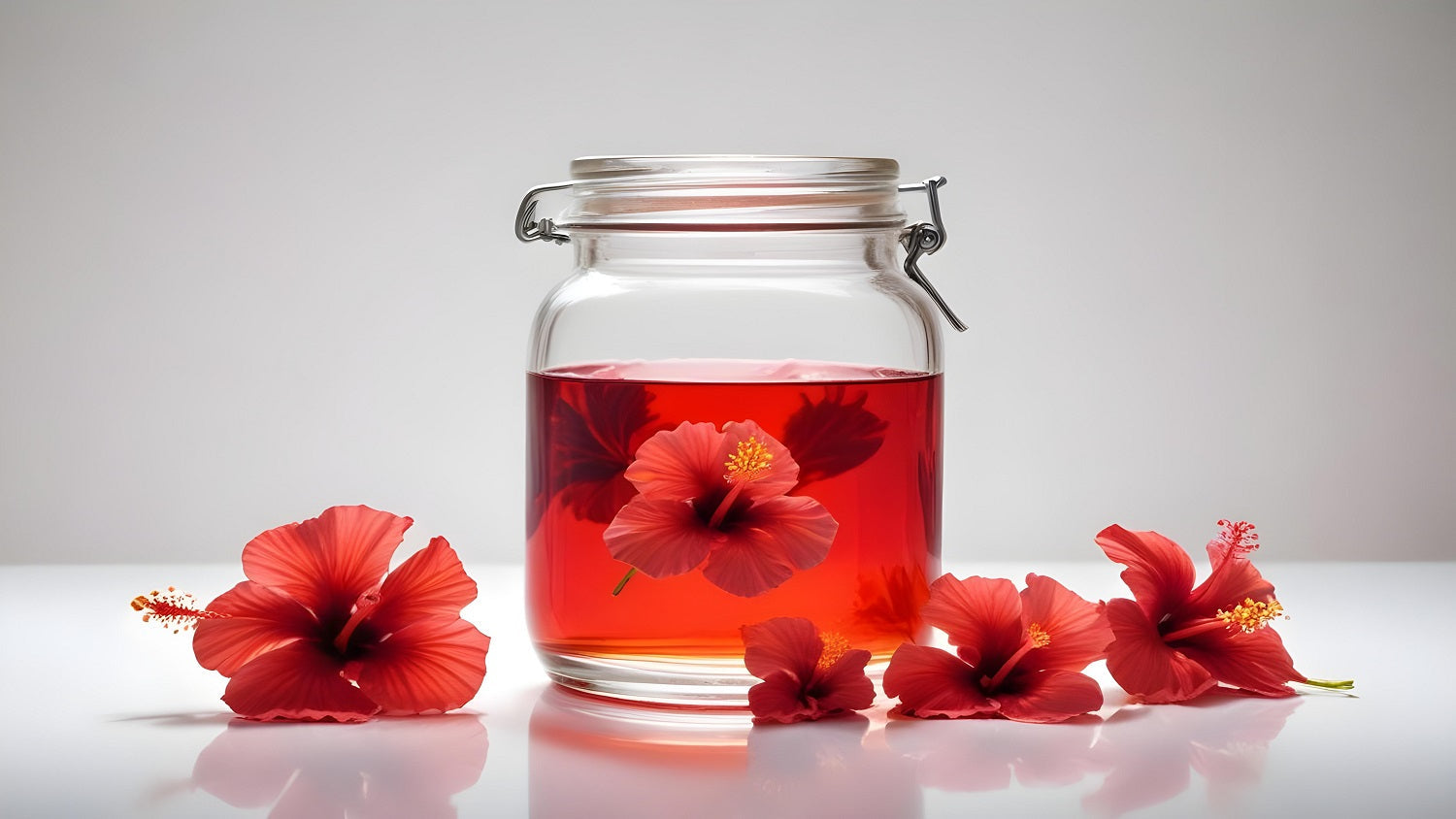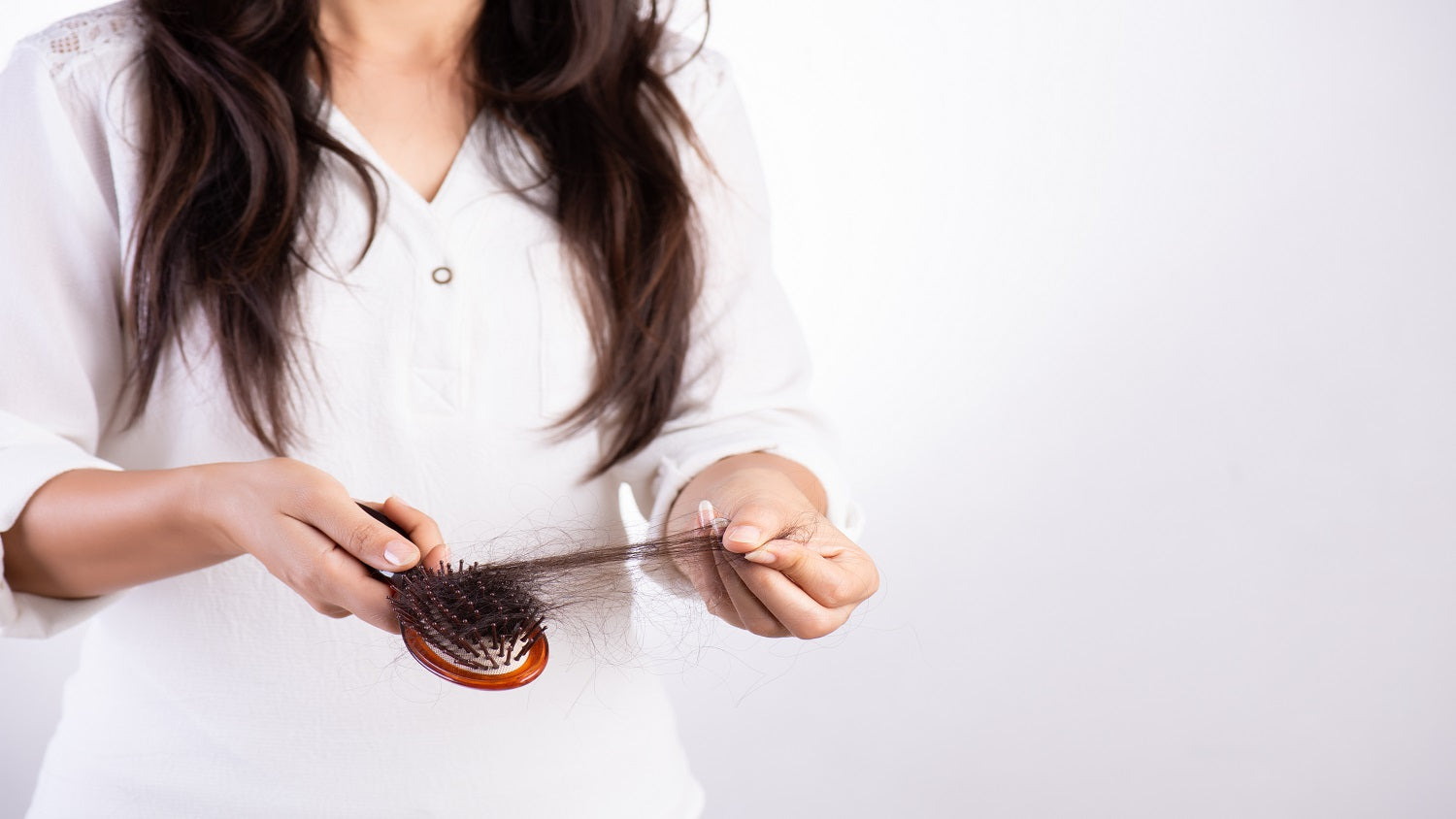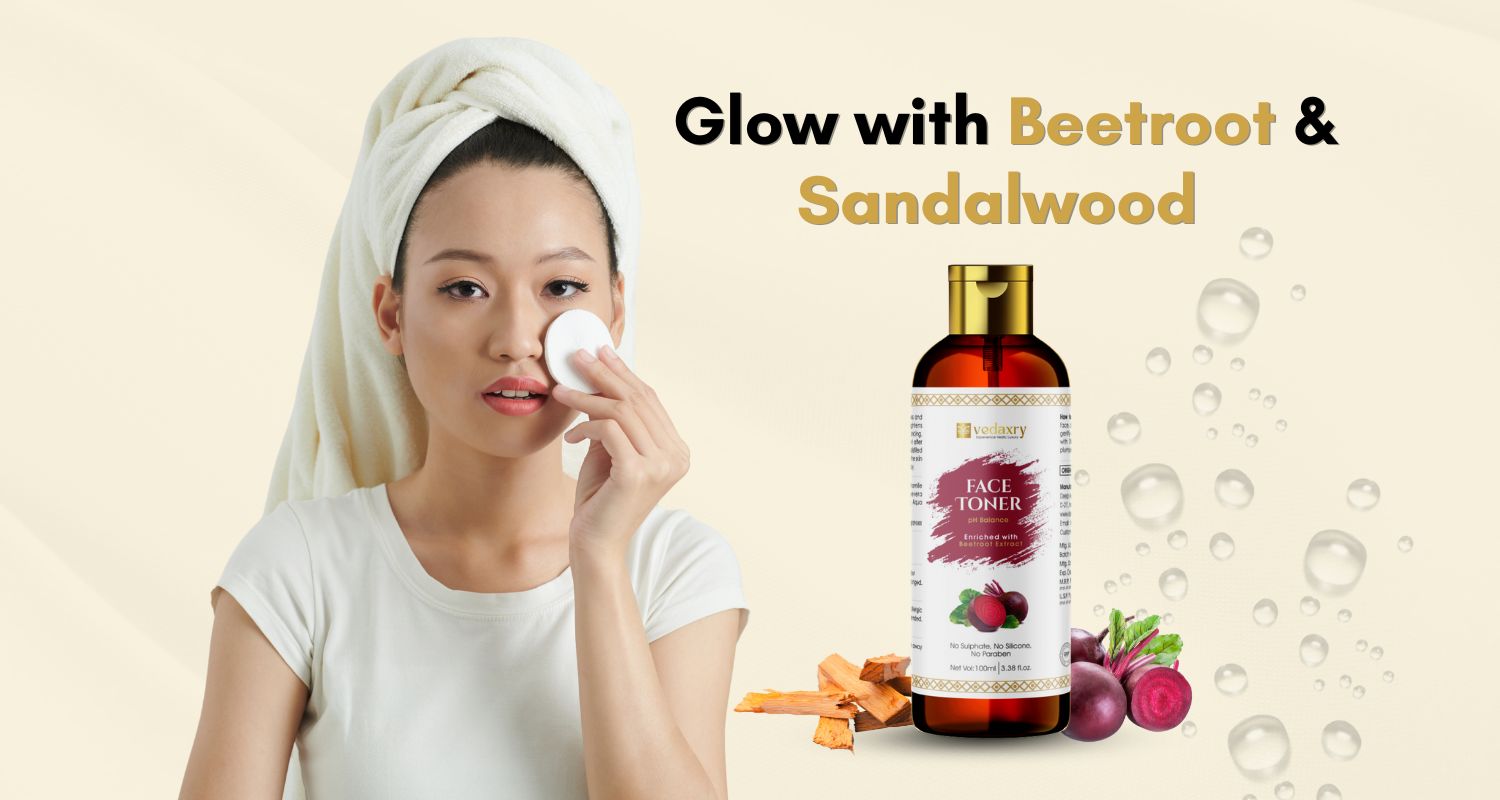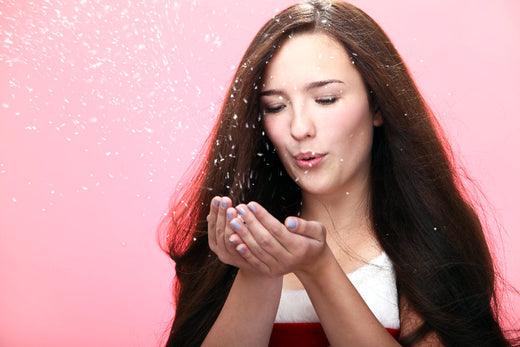Hibiscus Leaves for Hair : Benefits, Uses and Side Effects

Hibiscus leaves are compounds that benefit your hair. These leaves Have vitamins, minerals, and antioxidants. These leaves are used for centuries in traditional hair care practices.
Today, you can find Hibiscus as a key ingredient in hair oils, shampoos, masks, and conditioners. In this article you will find 7 key benefits of Hibiscus leaves and their uses.
Table of Contents
- 1. 7 Amazing Benefits of Hibiscus Leaves for Hair Growth
- 1.1 Boosts Hair Growth Naturally
- 1.2 Stops Hair Fall Naturally
- 1.3 Prevents Dandruff Naturally
- 1.4 Deeply Hydrates and Softens Hair
- 1.5 Prevents Premature Graying
- 1.6 Improves Scalp Health
- 1.7 Strengthens Hair Roots
- 2. 7 Powerful Ways to Use Hibiscus Leaves for Healthy Hair Growth
- 2.1 Hibiscus Paste
- 2.2 Hibiscus Oil
- 2.3 Hibiscus Hair Mask
- 2.4 Hibiscus Rinse
- 2.5 Mix with Henna for Natural Hair Conditioning
- 2.6 Hibiscus Powder for Hair Growth
- 2.7 Scalp Massage with Hibiscus Oil or Paste
- 3. Tips to Get Maximum Benefits of Hibiscus Leaves for Hair
- 4. Potential Side Effects & Precautions of Hibiscus Leaves for Hair
- 5. FAQ’s
7 Amazing Benefits of Hibiscus Leaves for Hair Growth
Hibiscus leaves are a natural remedy known for their various benefits in promoting hair growth. Here below are the 7 benefits of Hibiscus leaves:
1. Boosts Hair Growth Naturally
Hibiscus leaves are packed with amino acids, flavonoids, and essential nutrients that nourish the hair follicles and stimulate new hair growth. They help improve blood circulation in the scalp, ensuring that the hair roots receive adequate oxygen and nutrients. This results in stronger, healthier, and thicker hair over time.
📖Read Also: 10 Easy Ways to Naturally Darken Your Hair at Home
2. Stops Hair Fall Naturally
Hair fall is a common concern, and hibiscus leaves can naturally strengthen hair roots and minimize breakage. Their rich keratin-boosting properties fortify the hair shaft, preventing excessive shedding. Additionally, hibiscus helps in balancing pH levels of the scalp, which further reduces hair thinning.
📖Also Read: 10 Ayurvedic Treatments for Hair Loss and Regrowth
3. Prevents Dandruff Naturally
Dandruff and an itchy scalp can be frustrating, but hibiscus leaves have powerful antifungal and antibacterial properties that fight dandruff and cleanse the scalp effectively. The natural astringent properties help remove excess oil while maintaining moisture balance, preventing dryness and flakiness.
📖Important Read: 10 Effective Tips to Prevent Dandruff-Related Hair Loss
4. Deeply Hydrates and Softens Hair
Hibiscus leaves act as a natural conditioner that deeply hydrates hair strands, locking in moisture to make hair smooth, silky, and frizz-free. The leaves form a protective layer over hair cuticles, shielding them from dryness and environmental damage.
📖Read more: 6 Effective Hair Treatments for Frizzy Hair
5. Prevents Premature Graying
Hibiscus leaves contain antioxidants and vitamins that slow down premature graying by maintaining natural hair pigment. These leaves help in reducing oxidative stress on the scalp and promoting melanin production, which is essential for keeping hair dark and vibrant.
📖Bonus Read: 11 Ayurvedic Remedies to Naturally Reverse Premature Hair Greying
6. Improves Scalp Health
A healthy scalp is essential for strong hair growth, and hibiscus leaves help cleanse the scalp by removing dirt, excess oil, and dead skin cells. Their cooling properties soothe irritation and reduce the chances of scalp infections, ensuring a clean and fresh environment for hair follicles.
7. Strengthens Hair Roots
Hair roots need proper nourishment to remain strong, and hibiscus leaves are rich in Vitamin C, iron, and essential nutrients that reinforce hair structure. Stronger roots mean less breakage, reduced split ends, and healthier hair overall.
7 Powerful Ways to Use Hibiscus Leaves for Healthy Hair Growth

1. Hibiscus Paste
Hibiscus paste is a simple yet effective way to nourish the scalp and strengthen hair follicles.
✅ How to Prepare:
- Take fresh hibiscus leaves and grind them into a smooth, thick paste by adding a little water if needed.
- Apply the paste directly to your scalp and along the length of your hair.
- Let it sit for 30-45 minutes to allow the nutrients to penetrate deeply.
- Rinse it off with lukewarm water and a mild, sulfate-free shampoo.
💡 Benefits:
- Deeply nourishes hair roots and strengthens follicles.
- Reduces dandruff and soothes an itchy scalp.
- Prevents premature graying and enhances hair texture.
2. Hibiscus Oil
Hibiscus-infused oil is an excellent way to promote hair growth while preventing dryness and breakage.
✅ How to Prepare:
- Take 1 cup of coconut oil (or your preferred carrier oil) and heat it on low flame.
- Add a handful of crushed hibiscus leaves to the oil and let it simmer for 5-7 minutes.
- Strain the oil and store it in a clean bottle.
- Massage a generous amount onto your scalp and hair.
- Leave it on overnight or for a few hours before washing it off with mild shampoo.
💡 Benefits:
- Deeply conditions hair and prevents split ends.
- Stimulates blood circulation in the scalp, promoting hair regrowth.
- Protects hair from damage caused by heat styling and pollution.
3. Hibiscus Hair Mask
A hair mask made from hibiscus leaves can hydrate, strengthen, and repair damaged hair.
✅ How to Prepare:
- Take fresh hibiscus leaves and grind them into a fine paste.
- Mix the paste with yogurt, aloe vera gel, or honey to enhance hydration and nourishment.
- Apply the mixture evenly to your scalp and hair strands.
- Leave it on for 30 minutes before rinsing it off with water.
💡 Benefits:
- Provides intense hydration, making hair soft and manageable.
- Helps reduce hair fall and strengthens the roots.
- Repairs damaged hair and restores shine.
4. Hibiscus Rinse
Using hibiscus leaf-infused water as a hair rinse is a natural way to maintain scalp health and boost hair shine.
✅ How to Prepare:
- Boil a handful of hibiscus leaves in 2 cups of water for 10-12 minutes.
- Strain the water and let it cool to room temperature.
- Use this water as a final rinse after shampooing your hair.
💡 Benefits:
- Adds a natural shine and softness to your hair.
- Reduces frizz and makes hair more manageable.
- Soothes the scalp and helps in reducing dandruff.
5. Mix with Henna for Natural Hair Conditioning
Hibiscus leaves combined with henna can enhance natural hair color and provide deep nourishment.
✅ How to Prepare:
- Prepare a henna paste as per your usual routine.
- Add 2-3 tablespoons of hibiscus leaf paste to it and mix well.
- Apply the mixture to your hair and leave it on for 1-2 hours before rinsing.
💡 Benefits:
- Enhances hair color naturally while providing deep conditioning.
- Strengthens hair and prevents premature graying.
- Leaves hair soft, silky, and frizz-free.
6. Hibiscus Powder for Hair Growth
If fresh hibiscus leaves are not available, you can use hibiscus powder for similar benefits.
✅ How to Prepare:
- Take dried hibiscus leaves and grind them into a fine powder.
- Store the powder in an airtight container for later use.
- Mix 2-3 tablespoons of hibiscus powder with water, oil, or yogurt to create a nourishing hair mask.
- Apply the paste to your scalp and hair, leave it on for 30 minutes, then rinse thoroughly.
💡 Benefits:
- Strengthens hair from the roots and prevents hair fall.
- Acts as a natural cleanser to remove excess oil and dirt.
- Improves hair thickness and promotes faster hair growth.
7. Scalp Massage with Hibiscus Oil or Paste
A regular scalp massage with hibiscus oil or paste can improve blood circulation and stimulate hair growth.
✅ How to Do It:
- Take hibiscus-infused oil or freshly prepared hibiscus paste.
- Gently massage it into your scalp using circular motions for 5-10 minutes.
- Leave it on for a few hours before washing your hair.
💡 Benefits:
- Stimulates blood circulation and boosts hair growth.
- Reduces stress-related hair fall.
- Strengthens the hair shaft and prevents breakage.
Tips to Get Maximum Benefits of Hibiscus Leaves for Hair
✅Use Fresh Hibiscus Leaves – Fresh leaves contain the highest amount of nutrients for effective hair care.
✅ Combine with Other Ayurvedic Herbs – Mix with Amla, Bhringraj, or Neem to boost hair growth and scalp health.
✅ Apply as a Hair Mask Weekly – Use a hibiscus leaf paste with yogurt or aloe vera for deep conditioning.
✅ Massage with Hibiscus-Infused Oil – Heat hibiscus leaves with coconut or sesame oil for a nourishing scalp treatment.
✅ Use as a Natural Hair Rinse – Boil hibiscus leaves in water and use it as a final rinse for smooth and shiny hair.
✅ Replace Chemical Shampoos – Use hibiscus leaves blended with Shikakai as a gentle, natural cleanser.
✅ Be Consistent – Regular use (2-3 times a week) gives the best results in strengthening hair and preventing hair fall.
✅ Follow a Healthy Diet – A balanced diet rich in vitamins and minerals enhances the effects of hibiscus on hair.
Potential Side Effects & Precautions of Hibiscus Leaves for Hair
⚠ May Cause Allergic Reactions – Some people may experience itching or redness; always do a patch test before use.
⚠ Can Make Hair Oily – Excessive use of hibiscus-infused oils may lead to greasiness, especially for oily scalp types.
⚠ Might Not Suit Extremely Dry Hair – Hibiscus has mild astringent properties, so balance it with moisturizing ingredients like aloe vera.
⚠ Overuse Can Weigh Down Hair – Frequent application of heavy hibiscus pastes might make hair feel limp.
⚠ Choose Organic & Chemical-Free Leaves – Avoid leaves that may have been exposed to pesticides or chemicals.
⚠ May Leave Stains on Skin & Clothes – Hibiscus paste or juice can leave temporary stains, so apply carefully.
⚠ Avoid If You Have Scalp Sensitivity – If you have an overly sensitive scalp or existing conditions, consult a dermatologist before use.
These methods can help strengthen hair, reduce hair fall, and encourage faster growth.
FAQ’s
1. Is hibiscus good for hair?
Ans: Yes, Hibiscus is good for hair.
2. Is hibiscus flower good for hair?
Ans: Yes, Hibiscus flower is good for hair.
3. Hibiscus tea benefits for hair?
Ans: Hibiscus tea can have many benefits for your hair, including:
- Hair Growth
- Dandruff Control
- Hair Conditioning
4. How to apply hibiscus powder on hair?
Ans: We can apply by making the paste with yogurt.
5. How to use hibiscus leaves for hair growth?
Ans: Hibiscus leaves can be used for hair growth in a variety of ways, including:
- Hair mask
- Hair Oil
- Hair Shampoo
- In paste form.
6. What are Hibiscus hair mask benefits?
Ans: Hibiscus hair masks can have many benefits, including:
- Hair growth
- Hair loss prevention
- Frizz control
- Hair thickening
7. Can I get the reference of the product which are good for hair?
Ans: Yes, products of Vedaxry are really very good for hair growth and hair loss prevention.

Reviewed By
Dr. Sapna Kangotra
Senior Ayurveda Doctor




Comments